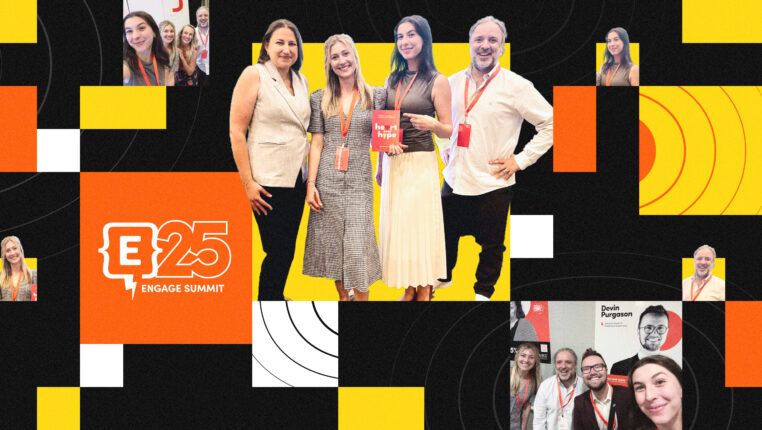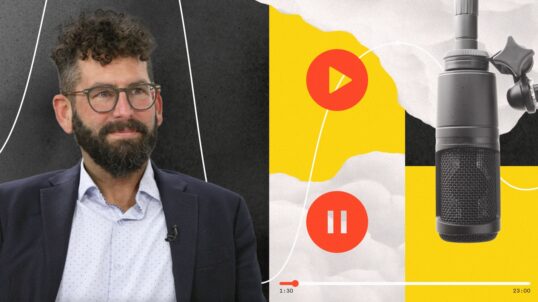The hype surrounding virtual reality has been steadily building for years, but with less than stellar demand over the holidays, you may be questioning whether now is the time for your school to invest in virtual reality. While we’ve written about how VR tours can boost your recruitment efforts in the past, we’ve haven’t addressed whether the time is right to go all-in on VR. Here are a few key points to consider as you weigh the pros and cons of diving headset first into the world of VR for higher education.
New Research Linking Empathy and VR
There has been increasing evidence to support the claim that virtual reality can have a deep effect on human behavior. Experiments from Stanford University’s Virtual Human Interaction Lab have shown that seeing a 65-year-old avatar of yourself prompts you to save more for retirement and that seeing the world through the eyes of a color-blind person will make you twice as willing to help him or her than if you just imagined it.
But what does any of this have to do with higher education? With overall enrollments dropping steadily since 2010 and decreased state funding for public institutions, many schools have turned to recruiting students from out-of-state to make up the difference.
Virtual reality tours offer a way for state schools to compete on a national level by providing out-of-state students a chance to experience campus without actually visiting. A virtual reality campus tour gives prospective students the feeling of engaging with the campus environment in a self-directed way as they would if they visited the campus on their own.
Related: 6 Innovative Colleges and Universities Using Virtual Reality Tours to Enhance Recruitment
Although it is a private institution, Trinity University’s decision to produce a virtual reality tour offers a prime example of the benefits of such an experience. “We wanted to help people experience Trinity in a way that showcased our campus culture and helped tell our story in a convenient, affordable way for students and families,” said Michelle Bartonico, Director of University Marketing and Communications. “VR allows the student to be as close to the real thing as possible. Being able to put themselves at Trinity is something that is really unique to immersive VR,” she said.
Trinity initially launched its VR experience at a national speech and debate tournament for high school students by providing VR glasses to people visiting Trinity’s table. “It was a huge success,” said Bartonico. “We launched this initially with high school students and actively find ways to add this to the mix – whether at an alumni event or recruitment session.” Trinity had such success with this campaign that they’ve even developed the capabilities to film and produce VR videos in-house. “We’ve got big plans,” said Bartonico on Trinity’s aim to incorporate virtual reality in future admissions efforts.
Increased Accessibility
Consider how dramatically headset prices have dropped since they first hit the market in the 1990s. The experience that once cost tens of thousands of dollars to create can now be offered at a fraction of the cost. Although high-end VR headsets will still run you about $500-$800, companies like Sony, Samsung, and Google have leveraged existing smartphone technology to offer VR headsets for as little as $15.
To get started with virtual reality, you can choose to develop a simple 360 degree campus tour. Using a virtual reality headset such as Oculus Rift, Google Daydream, or Google Cardboard, your tour visitors can look around campus, feeling like they’re standing right there. Google Cardboard costs less than $20, making it an ideal starter headset for universities who want to encourage prospective students to try out their virtual reality tour. Google’s VR View allows you to embed virtual reality content on your website, making it accessible to site visitors from around the world.
The University of Hartford’s Barney School of Business incorporated virtual reality into their admissions process by mailing Google Cardboard headsets to each accepted student with instructions on how to view their virtual tour. Branded with the Barney School logo, colors, and URL, “all the student had to do when the box arrived was unfold the cardboard and slide in their smartphone,” said Marty Roth, Dean of the Barney School.
According to Roth, “The virtual reality headsets have been an excellent differentiator from the brochures and booklets students are used to receiving from other schools.” “We have been taking the headsets on the road to college fairs and high school visits and have seen firsthand the awesome reactions of students the moment they put on one of the headsets,” said Roth.
The Barney School of Business has seen a 70% increase in freshman deposits compared to the University as a whole during the two-week period following the VR campaign. Follow-up emails regarding the VR campaign garnered a 56% open rate and a Facebook post promoting the VR campaign had a reach of 32,146 people and generated 223 clicks, according to Roth. Due to the campaign’s success, the Barney School is planning on sending Google Cardboards to accepted students for a second year in a row and continuing to bring the VR headset to college fairs and other recruiting events.
Peer Success
As you can see from the examples above, many schools are already using virtual reality tours to enhance recruitment efforts, and they are having great success in doing so. Temple University even took their virtual tour one step further when they turned it into an immersive treasure hunt adventure aimed at encouraging prospective students to schedule an in-person campus tour. We spoke with Francesca Reynolds, Director of Marketing at Temple to learn more about the motivation behind the video, and what the response has been like from students.
“Students love the virtual reality experience because it’s unexpected,” said Reynolds. “They’ve seen VR before, possibly through a video game console or have interacted with 360 video on social media, but I think most people don’t connect VR with a university.” Temple’s goal in producing such a unique virtual reality video was to “wow” prospective students by providing an immersive, high-level introduction to campus and inviting them to visit campus on their own as a follow-up to the VR experience.
Temple has promoted the video at various events and venues including Baltimore Comic Con, Dilworth Park, Experience Temple Days and the 2016 Military Bowl. They’re also planning a paid search and display retargeting campaign centered around the video. “We received positive feedback from prospective and current students, but we’ve also noticed it brought nostalgia to many alumni who were impressed with upgrades to facilities and buildings on campus since they’ve last seen them,” said Reynolds. The campaign has been so successful, that Temple is planning on not only using virtual reality for future admission efforts, but also expanding its use to interact with other university audiences such as Temple alumni and athletic recruits.
Imagine 10 years ago trying to envision how ingrained smartphones would become in everyday life. That’s the kind of promise many people feel virtual reality holds today. However, it’s going to take time until the technology is is mature enough for mass-market consumption. Facebook CEO Mark Zuckerberg, who led his company’s charge to buy Oculus for $3 billion in 2014, has said it will take a decade until VR is adopted by the masses. When that does happen, Goldenman Sachs projects VR/AR will be a massive revenue generator, growing into a $80 billion market by 2025.
Until the majority of people own VR headsets, it’s up to colleges and universities to bring the experience to students. To ensure prospective students have a way to view your virtual reality tour, you may consider mailing cardboard VR headsets as part of a campaign or bringing along a few headsets to the next college fair or high school recruitment visit. This way, everyone will have the opportunity to fall in love with your school, both virtually and in reality.
Still unsure how to implement a VR tour at your college or university? Learn more about how we can help make your virtual ideas a reality.



